
We’wha (1849-1896)
We’wha was a Zuni “princess” in 1886, who came to Washington D.C. during the time of “manifest destiny. As America expanded Westward, the young nation encountered more and more Native American peoples, including the Zuni of New Mexico. During their time in Washington, We’wha called on many congressmen, Supreme Court justices, and even President Cleveland himself. We’wha befriended anthropologist Matilda Coxe Stevenson, one of America’s first female scientists.
We’wha, who stood at 6 feet tall with “rather large” features was perceived by the people of Washington to be, undoubtedly, a woman. We’wha frequently used women’s restrooms and wore women’s clothes. But We’wha was born a man. In We’wha’s Zuni tribe, gender conformity to only male and female was not practiced. A third gender, which combined aspects of both traditional sexes was socially recognized by the Zuni. This third gender was also referred to as “two-spirit.”
In the Zuni, (and many other Native American tribes) people who could embody both male and female traits were considered influential and talented. We’wha, also referred to as the Zuni Man-Woman, was one of the first recorded modern gender non-binary people in the American territories.
If you want to read more about the history of Zuni two-spirit cultural practices, We’wha was the subject of the book The Zuni Man-Woman by Will Roscoe.

1850 - New Mexico Becomes US Territory
President Millard Fillmore signs into law the Organic Act, admitting New Mexico into the Union as a territory and allowing for the formation of a territorial government.
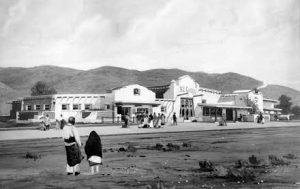
1879-1899
1879 - Railroad Reaches New Mexico
The first passenger train arrives in Otero. One year later, the line is extended through Santa Fe counties
1888-1889 – State Universities Established
Las Cruces College was founded (In 1960, this became NM State University)
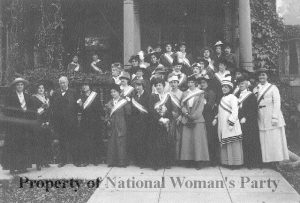
1912
1912 – New Mexico becomes the 47th state. Santa Fe becomes the State capital
1912 – Women campaign for suffrage publicly with a suffrage parade.
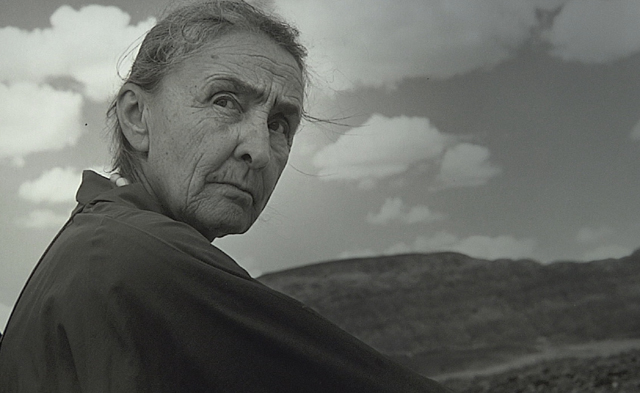
1920s
1921 – Congress passes the Snyder Act
The Snyder Act grants all Native Americans born in the US full citizenship.
1924 – The Society for Human Rights is founded in Chicago.
Henry Gerber founds the first documented gay rights organization in the United States.
1926 – Route 66 goes through Santa Fe. The Old Santa Fe Trail Association is established.
1929 – Georgia O’Keeffe began spending part of the year in the southwest

Mary Colter (1869–1958)
Mary Colter was the Chief architect for the Fred Harvey Company from 1902-1948 and she designed Harvey Hotels along the Grand Canyon. Four of her buildings along the Grand Canyon were established as National Historic Landmarks in 1987: Hopi House, Lookout Studio, Hermit’s Rest, and Desert View Watchtower.)
Her architectural style inspired by nature and utilizing natural materials became the earliest renditions of the now-popular “rustic” design.
Colter retired at the age of 79, after spending her life defending her aesthetic visions in a predominantly male field.
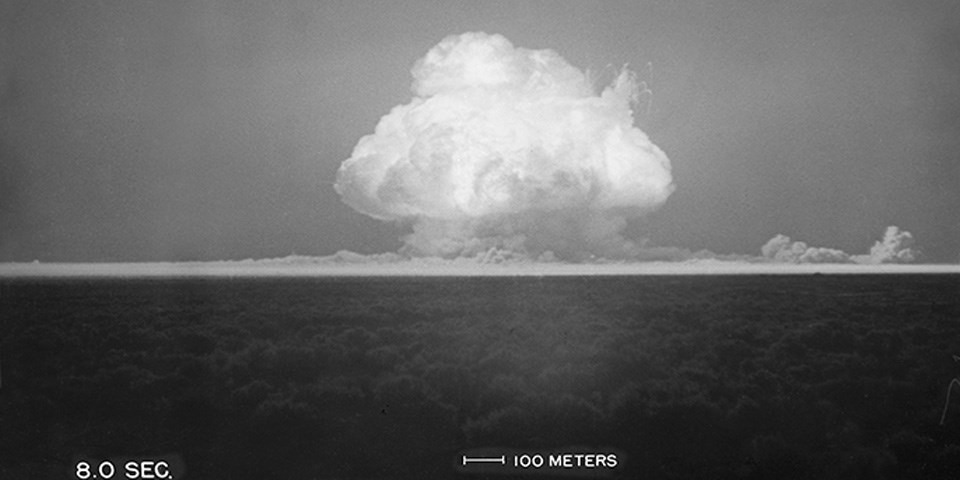
The First Atomic Bomb (1945)
The first atomic bomb is detonated in Trinity, New Mexico.
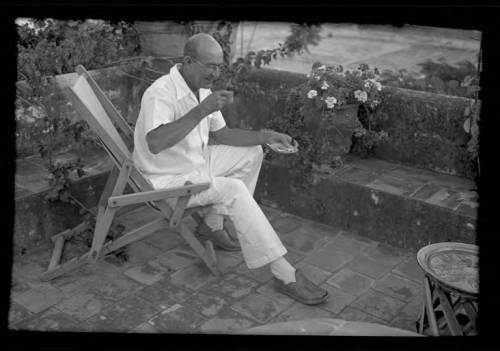
Witter Bynner (1881-1968)
Witter Bynner was a poet, translator, academic, and scholar of Chinese literature. Born in Brooklyn, NY in 1881, Brynner attended Harvard University and traveled the world rubbing elbows with such literary figures as Kahlil Gibran. During a short stint as a professor at the University of California Berkeley in 1918, he met his secretary and lover Walter Willard “Spud” Johnson, who would move with him to Santa Fe in 1922.
The pair were later immortalized as characters Owen and Villiers in D.H. Lawrence’s political novel The Plumed Serpent. After eight years in Santa Fe, he met his lifelong partner Robert Hunt, and the pair was famous in The City Different for entertaining such renowned artists as Martha Graham, Robert Frost, Igor Stravinsky, and Aldous Huxley.
A staunch advocate of Native American rights, Bynner lived in his adobe mansion on the Old Santa Fe Trail (now lovingly restored and operated as the Inn of the Turquoise Bear) until his death in 1968. Click here to learn more about this gay pioneer, humanitarian, and man of letters.
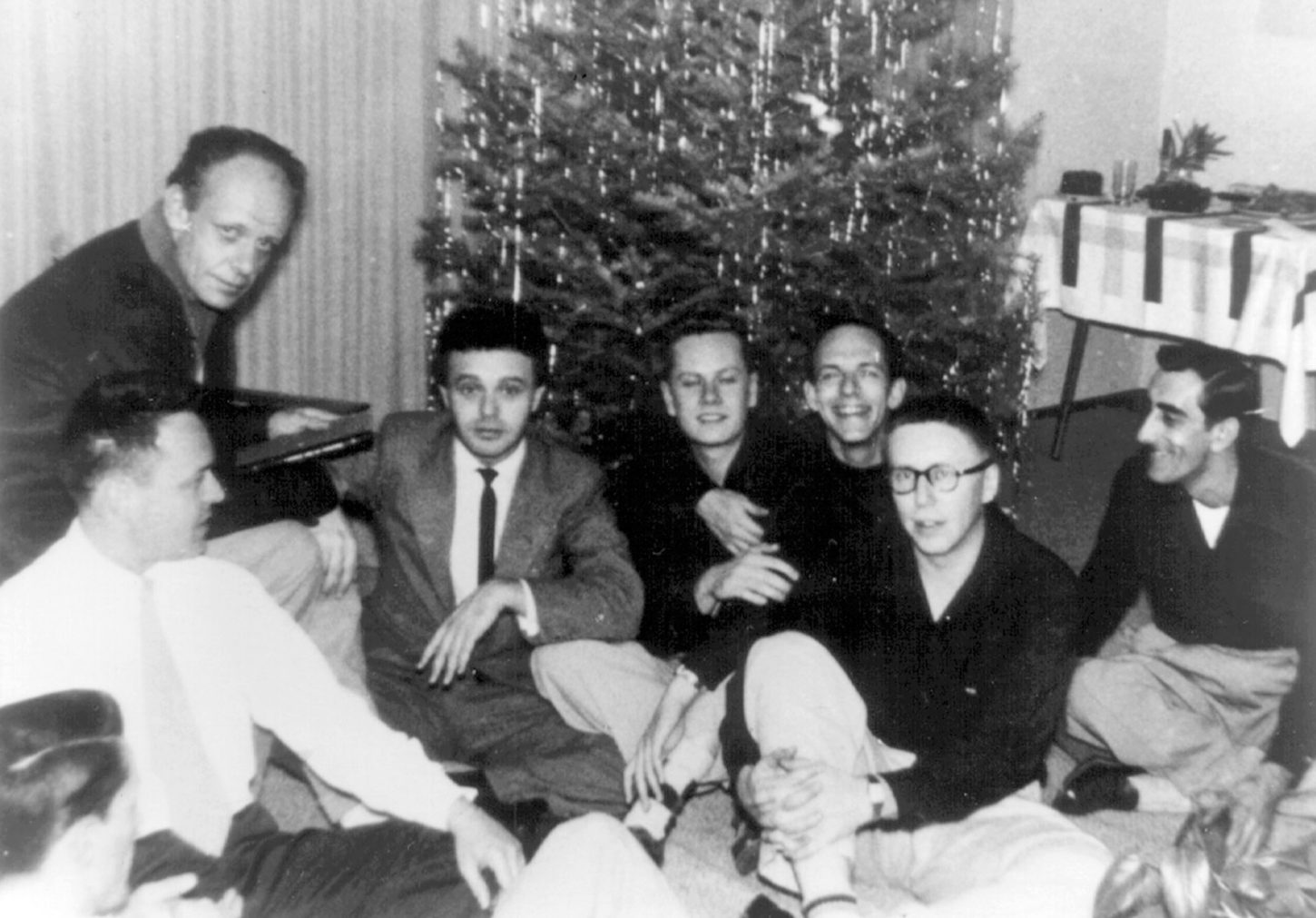
1950's
1950 – The Mattachine Society is established by activist Harry Hay
It is one of the first gay rights groups in the country, and one of the longest sustained. It focused on social acceptance and support within the gay community
1952 – Christine Jorgensen is the first American woman to publicly come out as transgender.
She spoke openly about gender confirmation surgery and hormone replacement therapy. She became an international sensation as she was the first transgender person to be visible to many through the widespread media.
1953 – New Mexico Supreme Court held that fellatio was not outlawed by the state’s sodomy statue

1960's
1961 – First attempt to repeal the state’s sodomy law; passed House, not successful in Senate
1967 – New Mexico Court of Appeals held that cunnilingus was criminal under state law – whether heterosexual or homosexual
1966 – The Compton Cafeteria Riot broke out in San Francisco
This riot broke out when trans women were arrested for breaking gendered clothing laws and denied service.
June 28, 1969 – Police raid the Stonewall Inn in NYC, prompting protests and demonstrations.

1970
June 28, 1970 – Community members marched through NYC on the one-year anniversary of the Stonewall Riots. The event was called the Christopher Street Liberation Day but is now considered the first gay pride parade.
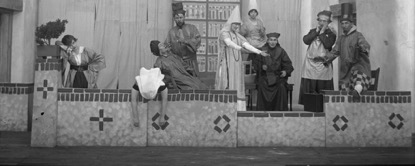
Robert Jerkins and Joe Paull
Both were original signers of the Playhouse’s lease in 1964 when the performance group “The Santa Fe Players” renovated an old livery stable in Barrio de Analco.
Robert (Bob) appeared in over 40 productions over the course of the Playhouse’s history. Joseph (Joe) received a doctorate in social work, heading a study that prompted the class action lawsuit by the ACLU which resulted in foster care laws being reformed in New Mexico.
The couple celebrated 43 years together in 2002 when their love story was front-page news in The New Mexican. That same year, they held a Celebration of the Covenant at the United Church of Santa Fe, in celebration of their love.
Joseph Paull passed away at the age of 83 on November 25, 2005, after Jerkins and Paull had just celebrated 46 years together. Robert Jerkins passed away two years later, in 2007.
Jerkins and Paull left a legacy gift to the Playhouse, which supports its operating budget to this day, and allowed the theater to buy its permanent home at 142 East De Vargas Street.
You can read more about Joe and Bob in the book Only in Santa Fe by Denise Kusel.

Roz Pulitzer (1930-2020)
Roz Pulitzer was a Bronx native, women’s rights activist, and a member of the National Women’s Caucus. She worked with the likes of Gloria Steinem, former U.S. Representative Bella Abzug, and women’s rights advocate Betty Friedan.
Roz fought for changes to the New York State rape laws, which previously required women to prove they had attempted to fight off their attacker and stigmatized them as victims.
She and her partner, Kay Lockridge, moved to Santa Fe in 1997, where Pulitzer pursued a career in photography. Roz passed away at the age of 90, on April 30, 2020, from viral pneumonia they believe to be linked to COVID-19.
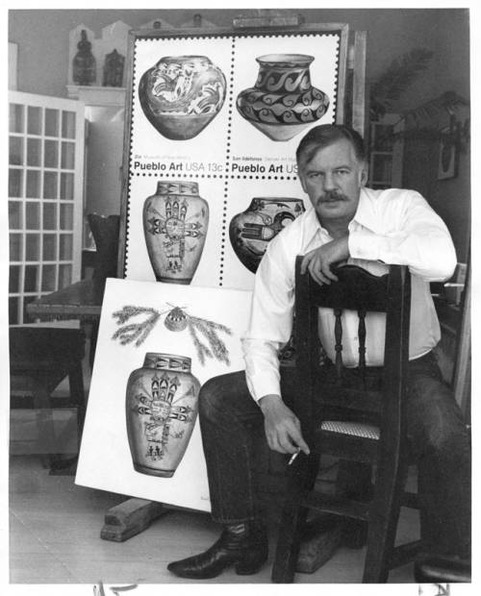
Ford Ruthling (1933-2015)
Ford Ruthling was a renowned artist whose work celebrated the rich culture and visual history of New Mexico. The son of a German immigrant who came to New Mexico to work as a governess, Ruthling was born in Tesuque in 1933. Educated at the University of New Mexico, he served in the United States Air Force as a navigator.
Best known for his “embossed paintings,” a style unique to him, Ruthling was equally prolific in various media including ceramics, tinwork, and oil paintings – all steeped in a distinctive southwestern style. Considered a “gay playboy,” Ruthling was the leader of a cadre of Santa Fe artists in the 1970s and is reported by artist and author Walter Cooper in his 2016 book Unbuttoned: Gay Life in the Santa Fe Art Scene to have had a six-month affair with Rock Hudson.
Although Ruthling’s work can be found in galleries around the country, including the Smithsonian, his broadest reach came from the US Postal service in 1977 when four of his paintings of Pueblo Indian pottery were made into first-class stamps. He lived in Santa Fe until his death in 2015.

Forrest Moses
Forrest Moses is a nationally acclaimed abstract landscape artist whose work is considered to be the finest of its genre. Born in Danville, Virginia in 1934, Moses received his BA and later MFA from Washington and Lee University. Stationed in the Philippines during his service in the U.S. Navy, Moses traveled through Asia where it is said that he was deeply influenced by Japanese aesthetics.
After his service in the Navy, Moses studied architecture and design at the Pratt Institute in Brooklyn and later worked briefly in Houston as an architect before moving to San Francisco to pursue a career as a painter. In 1969, he moved to Santa Fe, where he lived for four decades and painted most of his major works. His paintings hang in galleries around the country including the Whitney Museum of American Art in New York.
Stories of his life and friendships with gay artists in Santa Fe can be found in the pages of artist/author Walter Cooper’s 2016 book Unbuttoned: Gay Life in the Santa Fe Art Scene. In 2019, more than 30 of his works spanning his 50-year career were exhibited by LewAllen Galleries in Santa Fe.
1973 – Roe v. Wade
1975 – New Mexico repealed its anti-sodomy law, making it one of the first U.S. states to do so. Same-sex activities are now legal.
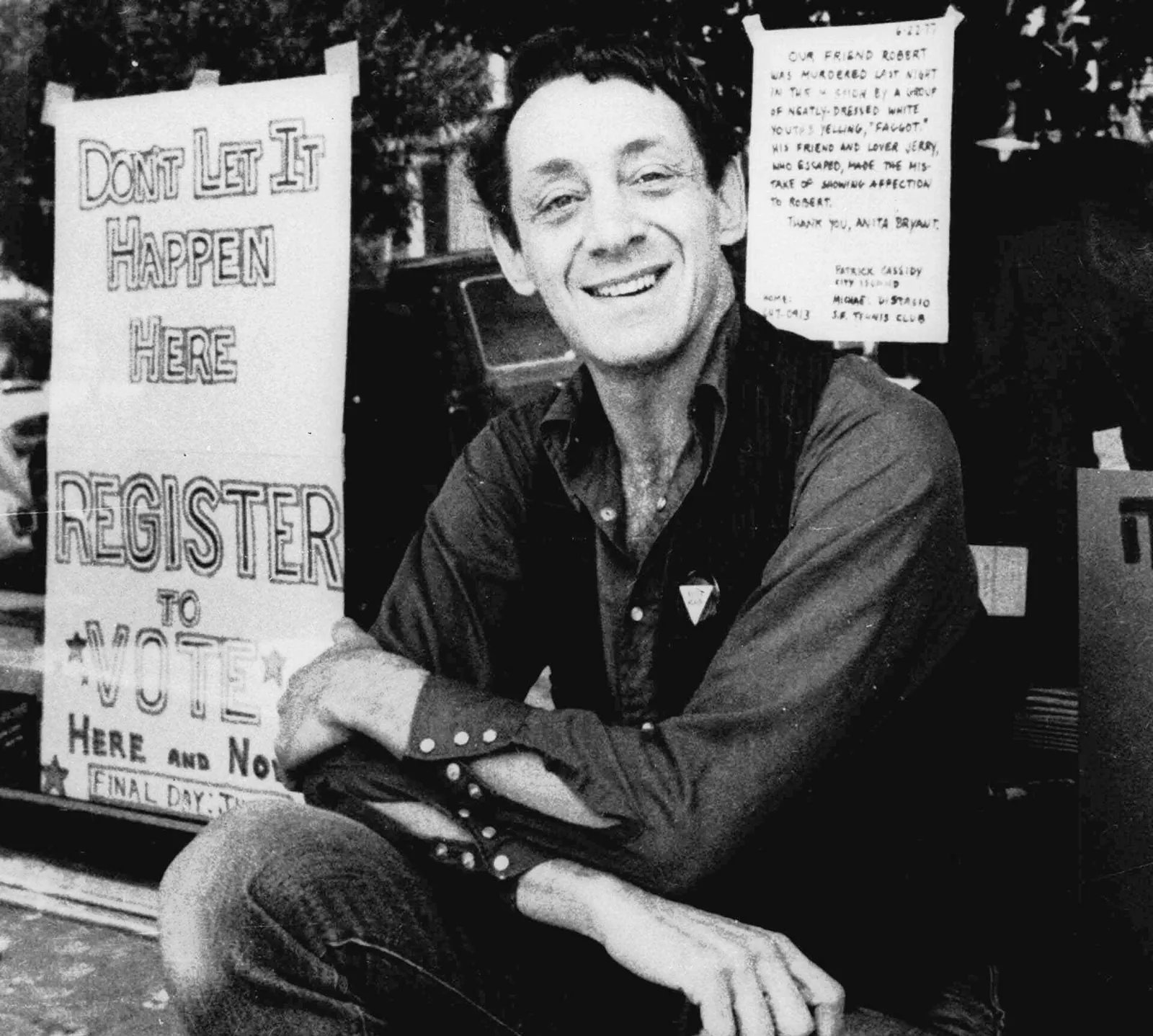
1978 – Harvey Milk Assassinated
January 9, 1978 – Harvey Milk is inaugurated as San Francisco city supervisor, making him the first openly gay man to be elected to public office in California.
In November, Harvey and San Francisco Mayor George Moscone were murdered by Dan White. He was a recently-resigned public official who wanted Moscone to reappoint him. After what was widely called “the Twinkie Defense“, White served only five years of a seven-year prison sentence. Less than two years after his release he returned to San Francisco, where he ultimately committed suicide.
1982 - First cases of AIDS appear in major US coastal cities
1982 – Nearly 800 people are infected with Gay-Related Immunodeficiency Disorder (GRID). By December of 1982, GRID had been renamed AIDS.
1986 – An attempt to reinstate the sodomy law failed

Madge Buckley (1918 - 2010)
Madge was the mother of Kenneth Buckley, who passed away in 1989 at the age of 39 from AIDS. After her son’s death, Madge, a retired architect, threw herself into AIDS activism.
She organized and led the Santa FE contributions to the national NAMES Project AIDS Memorial Quilt.The AIDS Quilt is made up of 30,000 panels, each a tribute to someone lost to AIDS, and was nominated for a Nobel Peace Prize in 1989. In 1996, it was displayed on the National Mall.
Madge traveled to Washington, D.C. for the display and described the quilt memorial as “healing work.” She used the quilt to spread awareness about AIDS, taking pieces of it to schools, churches, and civic groups.
In 1995 she was named a Santa Fe Living Treasure and KOAT’s Jefferson Award for her activism. Madge worked as an AIDS activist for over 60 years before her death in 2010. You can read more about Madge’s activism in the book, Santa Fe Living Treasures: Our Elders, Our Hearts, by Richard McCord
The 2000's
Elaine Sullivan
Elaine Sullivan founded Parents, Families, and Friends of Lesbians and Gays, or PFLAG, in Santa Fe in 1992. She now proudly serves as Board President of the Alliance for Local Economic Prosperity
2003 – New Mexico provided benefits to same-sex partners of state employees.
2003 – New Mexico directly and explicitly addresses violence and hate crimes committed solely based on the victim’s or victims’ actual or perceived race, religion, color, ancestry, national origin, gender, sexual orientation, or gender identity.[
2003 – New Mexico law protected against discrimination based on sexual orientation and gender identity “in matters of employment, housing, credit, public accommodations, and union membership.”
Alicia and Eduardo Moreno
Alicia and Ed became involved in support and activism in the LGBTQ+ community after their son came out as gay. Alicia Moreno has testified before the New Mexico State Legislature to urge the government to grant equal rights to LGBTQ+-identifying people. Governor Bill Richardson signed the bill into law in 2003, becoming the 14th state to do so.
Alicia and Ed both deeply love their son, and his partner, and are deeply committed to encouraging empathy and acceptance for all people.
2012 – The state’s highest court granted parental rights to the [lesbian] who had been unable to adopt her partner’s adopted child but who had helped raise and had supported the child financially.
2013 – New Mexico Supreme Court ruled that the state must provide same-sex couples with the same marriage rights as different-sex couples, making New Mexico the 17th U.S. state to recognize same-sex marriage.
2017 – New Mexico Legislature passed a bill that banned sexual orientation change efforts on minors. The bill went into effect on 4/7/2017.
June 26, 2015 – Marriage Equality in all 50 States
The Supreme Court rules that states cannot ban same-sex marriage, legalizing same- sex marriage in all 50 states.
2019 – New Mexico Legislature passed a bill within both houses unanimously to codify same-sex marriage legislation. The bill was signed into law in April and went into effect 7/1/19.
2019 – New Mexico Legislature passed a bill within both houses to protect students in New Mexico schools from bullying on the basis of sexual orientation and gender identity. The bill was signed into law in April and went into effect 7/1/19.
2019 – New Mexico Legislature by a supermajority passed to repeal the 1984 sex reassignment surgery requirement. The bill also explicitly provides a “neutral” sex designation, known as “X,” alongside male and female. The bill went into effect on 11/1/2019.
2019 – New Mexico Legislature passed a bill to explicitly allow gender-neutral bathrooms. The bill went into effect on 7/1/2019.
2019 – New Mexico issues corrected birth certificates to transgender people without the requirement that they undergo surgery or other medical operations.
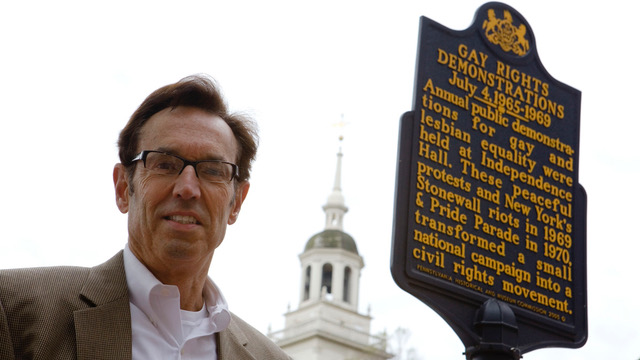
Malcolm Lazin
In this Wednesday, April 22, 2009 photo, Malcolm Lazin, executive director of the Equality Forum, poses for a portrait in view of Independence Hall, center, and a historical marker commemorating annual public demonstrations for gay and lesbian equality, in Philadelphia. The National Equality Rally at Independence Hall is scheduled to take place on May 3, 2009. (AP Photo/Matt Rourke)
Malcolm Lazin is an entrepreneur, social activist, film producer, former federal prosecutor, and founder of the LGBTQ rights organization Equality Forum. Born in 1943, the son of a Jewish family in a heavily Amish and Mennonite Pennsylvania Dutch country, Lazin grew up with a sense of responsibility to champion social justice. In 1963, as a senior at Lebanon Valley College, he witnessed firsthand Dr. Martin Luther King’s famed “I Have a Dream” speech while attending The March on Washington. After receiving a degree in law from Boston University, Lazin went to work for the U.S. Department of Housing and Urban Development and later went on to prosecute slumlords. Truly a renaissance man of change, Lazin’s many projects have included producing documentary films, an Off-Broadway play, and even a Bicentennial Rodeo. In 1993, he founded Equality Forum, an organization that, among many things, raises awareness of LGBTQ issues and measures the gay vote. A lifelong Republican, Lazin left the GOP after the election of Donald Trump in 2016. He splits his time between Sarasota, Florida, and Santa Fe, and was recently instrumental in raising local Santa Fe dollars for Democrat Pete Buttigieg’s 2020 bid for the White House.
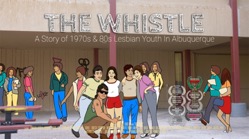
The Whistle (2019)
The Whistle
Directed by Albuquerque native Storm Miguel Florez, this film documents Florez’s experience as a teenage dyke in Albuquerque, specifically learning the “secret lesbian code” and “the dyke whistle.”
The codes developed by teenagers helped Florez and others who were new to the community find their peers when their sexuality was still largely a secret. As one interviewee said, “it was part of the language that we used in order to, gosh – I guess it was to protect ourselves.”
The film explores the culture of youth homosexuality in Albuquerque in the 70s and 80s – how teens came out, found each other, built a community, and supported one another through the discrimination they faced.

Herb Lotz
Herb Lotz – is a photographer and activist best known for his documentation of the everyday life of soldiers during the Vietnam War.
Born in Post-World War II Illinois, Lotz’ formal photography training at the Art Institute of Chicago was cut short in his third year when he was drafted into the U.S. Army. Rather than claim 4-F status for being gay, Lotz went to Vietnam where he served until 1969. After returning home to Chicago in 1970 (a changed man in a changed city), Lotz set his sights on moving to the Southwest. “A friend told me Santa Fe had at least one gay bar, and I would find arts and sophistication,” he recounted to the Santa Fe New Mexican.
In Santa Fe, he would also find a community of acceptance, a place to grow as an artist and heal from his PTSD. He’s had his work exhibited in numerous regional group shows and has also received early commissions from the Wheelwright Museum of the American Indian. In 2017, The New Mexico History Museum presented Sleeping During the Day: Vietnam 1968, an exhibit of his work in honor of Santa Fe Gay Pride Weekend. To learn more about Herb Lotz’s artistic journey, Click Here.
